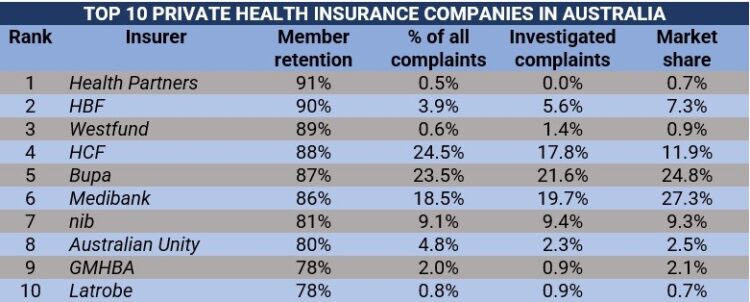
- Legal Requirements for Employer-Sponsored Health Insurance: Are Employers Required To Provide Health Insurance
- Types of Employer-Sponsored Health Insurance Plans
- Employer Responsibilities in Providing Health Insurance
- Employee Considerations Regarding Employer-Sponsored Health Insurance
- Trends and Future Directions in Employer-Sponsored Health Insurance
- Summary
- FAQ
Are employers required to provide health insurance? This question has become increasingly important as healthcare costs continue to rise and the Affordable Care Act (ACA) has reshaped the landscape of employer-sponsored health insurance. The ACA, enacted in 2010, aimed to expand health insurance coverage to millions of Americans, and it included a provision known as the employer mandate, which imposed certain requirements on businesses with a specific number of employees. This mandate has significantly impacted the way employers approach health insurance, and it has also raised numerous questions for both employers and employees.
This article will delve into the legal requirements surrounding employer-sponsored health insurance, explore the different types of plans available, and examine the responsibilities of both employers and employees in this complex area. We will also discuss emerging trends and potential future directions for employer-sponsored health insurance in the coming years.
Legal Requirements for Employer-Sponsored Health Insurance: Are Employers Required To Provide Health Insurance
The Affordable Care Act (ACA), also known as Obamacare, has significantly impacted the landscape of employer-sponsored health insurance in the United States. This legislation aims to expand health insurance coverage and make it more affordable for individuals and families.
The Employer Mandate Under the ACA
The ACA’s employer mandate requires certain businesses to offer health insurance coverage to their full-time employees. This mandate aims to ensure that more individuals have access to affordable health insurance and reduce the number of uninsured Americans.
The employer mandate applies to businesses with 50 or more full-time equivalent (FTE) employees. An FTE is calculated based on the number of hours worked by all employees, including part-time workers. For example, a business with 25 full-time employees and 50 part-time employees who each work 20 hours per week would be considered to have 50 FTEs, exceeding the threshold for the employer mandate.
Businesses that meet the FTE threshold are required to offer health insurance coverage that meets certain minimum standards, such as covering essential health benefits, including preventive care, maternity care, and prescription drugs. The coverage must also be affordable for employees, meaning that the employee’s contribution towards the premium cannot exceed a certain percentage of their household income.
If an employer does not comply with the employer mandate, they may face penalties. The penalty is calculated based on the number of full-time employees who are not offered health insurance coverage.
Exemptions from the Employer Mandate
While most businesses with 50 or more FTEs are subject to the employer mandate, there are several exemptions.
Exemptions for Small Businesses
Small businesses with fewer than 50 employees are exempt from the employer mandate. However, they may still be eligible for tax credits to help offset the cost of providing health insurance to their employees.
Exemptions for Certain Religious Organizations
Certain religious organizations are exempt from the employer mandate if their primary purpose is to provide religious instruction or services and they oppose providing health insurance coverage that includes contraceptive services.
Exemptions for Seasonal Businesses
Seasonal businesses, such as those in the agriculture or tourism industries, may be exempt from the employer mandate if they employ workers for less than 120 days in a year.
Exemptions for Certain Church-Affiliated Organizations
Certain church-affiliated organizations, such as those that primarily employ church members, may be exempt from the employer mandate if they meet specific criteria.
Types of Employer-Sponsored Health Insurance Plans
Employer-sponsored health insurance plans are a common benefit offered by many companies to their employees. These plans provide financial protection against the high costs of healthcare. There are various types of health insurance plans available, each with its unique features, benefits, and drawbacks. Understanding the different types of plans can help you choose the best option for your needs and budget.
Health Maintenance Organizations (HMOs)
HMOs are a type of health insurance plan that provides comprehensive healthcare services through a network of providers. You must choose a primary care physician (PCP) within the HMO network. The PCP acts as your gatekeeper, referring you to specialists within the network if necessary.
- Benefits: HMOs typically have lower premiums than other types of plans. They often have lower copayments and deductibles. They also emphasize preventive care and wellness services.
- Drawbacks: HMOs generally require you to stay within their network for coverage. You may need referrals from your PCP to see specialists. You may have limited choice in selecting a PCP or specialists.
Preferred Provider Organizations (PPOs)
PPOs offer more flexibility than HMOs. You can choose to see providers both within and outside the PPO network. However, you’ll generally pay lower costs if you stay within the network.
- Benefits: PPOs offer more flexibility in choosing healthcare providers. You don’t need a referral to see a specialist. You can access out-of-network providers, though at a higher cost.
- Drawbacks: PPOs typically have higher premiums than HMOs. You may have higher copayments and deductibles than with HMOs. Out-of-network services can be expensive.
Point-of-Service (POS) Plans
POS plans combine features of both HMOs and PPOs. You can choose to see providers within or outside the network, but you’ll usually pay lower costs for in-network services.
- Benefits: POS plans offer some flexibility in choosing providers. They often have lower premiums than PPOs. You can access out-of-network services, but at a higher cost.
- Drawbacks: POS plans may require referrals from your PCP for specialist care. You may have higher copayments and deductibles than with HMOs.
Comparing Health Insurance Plans
| Plan Type | Key Features | Benefits | Drawbacks |
|---|---|---|---|
| HMO | Network-based, PCP gatekeeper, emphasis on preventive care | Lower premiums, lower copayments and deductibles, emphasis on preventive care | Limited provider choice, need for referrals, out-of-network services not covered |
| PPO | More provider flexibility, in-network and out-of-network coverage | More provider choice, no need for referrals, access to out-of-network providers | Higher premiums, higher copayments and deductibles, out-of-network services expensive |
| POS | Combines HMO and PPO features, network-based, referral requirements | Flexibility in choosing providers, lower premiums than PPOs, access to out-of-network providers | Referral requirements, higher copayments and deductibles than HMOs, out-of-network services expensive |
Employer Responsibilities in Providing Health Insurance

Offering health insurance is a significant responsibility for employers, requiring them to manage various administrative tasks and comply with legal obligations. This section delves into the key aspects of employer responsibilities in providing health insurance, including enrollment processes, premium contributions, claims processing, and legal requirements related to employee privacy and data security.
Administrative Duties
Employers offering health insurance must establish efficient administrative processes to manage the plan effectively. These duties encompass various aspects, including:
- Enrollment: Employers must provide employees with clear information about available health insurance plans and their coverage options. They need to facilitate the enrollment process, allowing employees to choose their preferred plan and make necessary deductions for premium contributions.
- Premium Contributions: Employers are responsible for collecting premium contributions from employees, either through payroll deductions or direct payments. They also contribute a portion of the premium cost, depending on the plan design. Employers must ensure timely payment of premiums to the insurance carrier to maintain coverage for employees.
- Claims Processing: Employers typically handle claims processing for their employees. They receive and review claims submitted by employees, verifying eligibility and coverage. Employers may use a third-party administrator (TPA) to handle claims processing, but they remain ultimately responsible for ensuring claims are processed accurately and efficiently.
Employee Privacy and Data Security
Employers have a legal obligation to protect the privacy and security of their employees’ health information. This responsibility is governed by the Health Insurance Portability and Accountability Act (HIPAA), which sets strict standards for handling protected health information (PHI).
- HIPAA Compliance: Employers must ensure their health insurance plan complies with HIPAA regulations. This includes implementing safeguards to protect PHI from unauthorized access, use, disclosure, alteration, or destruction.
- Employee Training: Employers must provide training to employees handling health insurance information about HIPAA privacy and security requirements. This training should cover topics such as data security protocols, handling confidential information, and reporting breaches.
- Data Security Measures: Employers should implement robust data security measures to protect PHI, such as encryption, access controls, and regular security audits. They must also have a plan in place to address data breaches and notify affected individuals promptly.
Risks and Liabilities
While providing health insurance offers significant benefits to employees, it also comes with certain risks and liabilities for employers.
- Cost Fluctuations: Employer-sponsored health insurance premiums can fluctuate significantly, influenced by factors such as healthcare utilization, inflation, and changes in government regulations. This can lead to increased costs for employers, potentially impacting their budget and profitability.
- Legal Claims: Employers can face legal claims related to health insurance, such as discrimination, wrongful denial of coverage, or breach of privacy. These claims can result in significant financial penalties and reputational damage.
- Employee Misconduct: Employers can be held liable for employee misconduct related to health insurance, such as fraud or misuse of benefits. This highlights the importance of having robust internal controls and employee training programs.
Employee Considerations Regarding Employer-Sponsored Health Insurance
Employer-sponsored health insurance is a valuable benefit that can significantly impact your overall well-being and financial stability. It’s essential to carefully consider your options and make informed decisions to ensure you get the best possible coverage at a reasonable cost. This section will provide insights into key factors to consider when evaluating employer-sponsored health insurance plans.
Understanding Coverage and Benefits
The coverage offered by employer-sponsored health insurance plans can vary widely. It’s crucial to understand the specific benefits included in each plan and how they align with your individual needs.
- Deductible: The amount you must pay out-of-pocket before your insurance starts covering medical expenses.
- Co-insurance: The percentage of medical costs you share with your insurance company after your deductible is met.
- Co-payment: A fixed amount you pay for each medical service, such as a doctor’s visit or prescription.
- Out-of-pocket maximum: The maximum amount you’ll have to pay for covered medical expenses in a year.
- Prescription drug coverage: The plan’s formulary, which lists covered medications, and any co-payments or restrictions for prescriptions.
- Mental health and substance abuse coverage: The plan’s coverage for mental health and addiction treatment services.
It’s essential to compare the coverage provided by different plans and consider your typical healthcare needs and expenses. For example, if you have a chronic condition, you might prioritize a plan with a lower deductible and co-insurance for that specific condition.
Evaluating Costs and Premiums
While employer-sponsored health insurance can be a significant benefit, it’s essential to understand the associated costs.
- Premium: The monthly payment you make for your health insurance. This amount can be deducted from your paycheck pre-tax, which can save you money on taxes.
- Deductible: The amount you pay out-of-pocket before your insurance starts covering medical expenses.
- Co-insurance: The percentage of medical costs you share with your insurance company after your deductible is met.
- Co-payments: A fixed amount you pay for each medical service, such as a doctor’s visit or prescription.
- Out-of-pocket maximum: The maximum amount you’ll have to pay for covered medical expenses in a year.
You can also choose a plan with a higher deductible in exchange for a lower premium, but this means you’ll pay more out-of-pocket for medical expenses. Consider your financial situation and healthcare needs when deciding on the best cost balance.
Assessing Network Access
Network access is crucial for accessing affordable healthcare. It’s important to understand which doctors, hospitals, and other healthcare providers are included in your plan’s network.
- In-network providers: Healthcare providers who have agreed to accept your insurance plan’s negotiated rates.
- Out-of-network providers: Healthcare providers who are not part of your plan’s network. You’ll likely pay higher costs for services from out-of-network providers.
Before choosing a plan, consider your preferred doctors, hospitals, and specialists and ensure they are in the plan’s network. If you need to see a specialist frequently, it’s essential to check if they are in-network.
Understanding Your Rights and Responsibilities
Employees have certain rights and responsibilities regarding employer-sponsored health insurance.
- Open enrollment: A period when you can change your health insurance plan or enroll in a new one.
- COBRA continuation coverage: Allows you to continue your health insurance coverage for a limited time after you leave your job, even if you lose your job involuntarily.
- HIPAA privacy rights: Protects your health information and ensures its confidentiality.
It’s important to be aware of these rights and understand how they apply to you. For example, you should know when open enrollment periods occur and how to enroll in a new plan or change your existing one.
Maximizing Benefits and Minimizing Costs, Are employers required to provide health insurance
There are several strategies you can use to maximize the benefits and minimize the costs associated with employer-sponsored health insurance.
- Use preventive care services: Many plans cover preventive care services like annual check-ups and screenings at no cost to you.
- Take advantage of flexible spending accounts (FSAs): These accounts allow you to set aside pre-tax dollars for medical expenses, which can reduce your taxable income.
- Shop around for prescription drugs: Compare prices at different pharmacies and consider generic medications when available.
- Negotiate medical bills: If you receive a medical bill you believe is too high, try negotiating with the provider to lower the cost.
- Understand your coverage: Carefully review your plan’s coverage details and understand your out-of-pocket expenses, deductibles, and co-insurance.
By taking advantage of these strategies, you can maximize your benefits and minimize your out-of-pocket costs.
Trends and Future Directions in Employer-Sponsored Health Insurance

The landscape of employer-sponsored health insurance is constantly evolving, driven by factors such as technological advancements, changing demographics, and economic pressures. These shifts are shaping the way employers design and offer health insurance plans, and employees navigate the healthcare system.
High-Deductible Health Plans (HDHPs)
HDHPs are becoming increasingly popular among employers seeking to control healthcare costs. These plans feature lower monthly premiums but higher deductibles, requiring employees to pay more out-of-pocket for healthcare services before insurance coverage kicks in.
- Increased Employer Adoption: A 2022 study by the Kaiser Family Foundation found that 45% of workers in medium and large firms were enrolled in HDHPs, a significant increase from 20% in 2006.
- Potential Impact on Employees: While HDHPs can lower monthly premiums, they can also lead to higher out-of-pocket expenses for employees, particularly those with chronic conditions or who require frequent medical care. Some employers offer Health Savings Accounts (HSAs) to help employees manage these costs.
Telehealth Services
The use of telehealth services, such as virtual consultations and remote monitoring, has surged in recent years, particularly due to the COVID-19 pandemic. Employers are increasingly incorporating telehealth into their health insurance plans, recognizing its benefits in terms of convenience, accessibility, and cost savings.
- Employer Benefits: Telehealth can help employers reduce healthcare costs by offering a more cost-effective alternative to traditional in-person visits. It can also improve employee productivity by enabling them to access care without taking time off work.
- Employee Benefits: Telehealth provides employees with greater flexibility and convenience in accessing healthcare, especially for those who live in rural areas or have busy schedules.
Future Directions
Looking ahead, the future of employer-sponsored health insurance is likely to be shaped by several key trends.
- Personalized Health Plans: Employers may offer more personalized health plans tailored to the specific needs and preferences of their employees, incorporating factors such as age, health status, and lifestyle choices.
- Focus on Wellness: Employers are likely to continue emphasizing wellness programs and preventative care, aiming to improve employee health and reduce healthcare costs.
- Increased Transparency: Employers may provide employees with more transparent information about healthcare costs, coverage details, and provider networks, empowering them to make informed decisions about their health care.
Summary

Navigating the world of employer-sponsored health insurance can be challenging, but understanding the legal requirements, available plan options, and responsibilities involved is crucial for both employers and employees. By staying informed and actively engaging in the process, individuals can make informed decisions that best meet their needs and ensure they have access to quality healthcare. As the healthcare landscape continues to evolve, it is important to stay updated on the latest trends and regulations to ensure that both employers and employees are prepared for the future of employer-sponsored health insurance.
FAQ
What are the penalties for employers who don’t offer health insurance?
Employers who don’t offer health insurance to their full-time employees may be subject to financial penalties under the ACA. The amount of the penalty depends on the number of employees and the cost of the plan.
Can employees choose their own health insurance plan?
In some cases, employees may have the option to choose their own health insurance plan from a selection offered by their employer. However, this is not always the case, and the specific options available will vary depending on the employer’s plan.
What are the different types of health insurance plans offered by employers?
Common types of health insurance plans offered by employers include Health Maintenance Organizations (HMOs), Preferred Provider Organizations (PPOs), and Point-of-Service (POS) plans. Each plan has its own features, benefits, and drawbacks, and the best choice for an individual will depend on their specific needs and circumstances.
What are the tax implications of employer-sponsored health insurance?
Employer-sponsored health insurance premiums are generally tax-deductible for employers, and employees may be able to deduct their contributions to their health savings account (HSA). It is important to consult with a tax professional to understand the specific tax implications of employer-sponsored health insurance.





